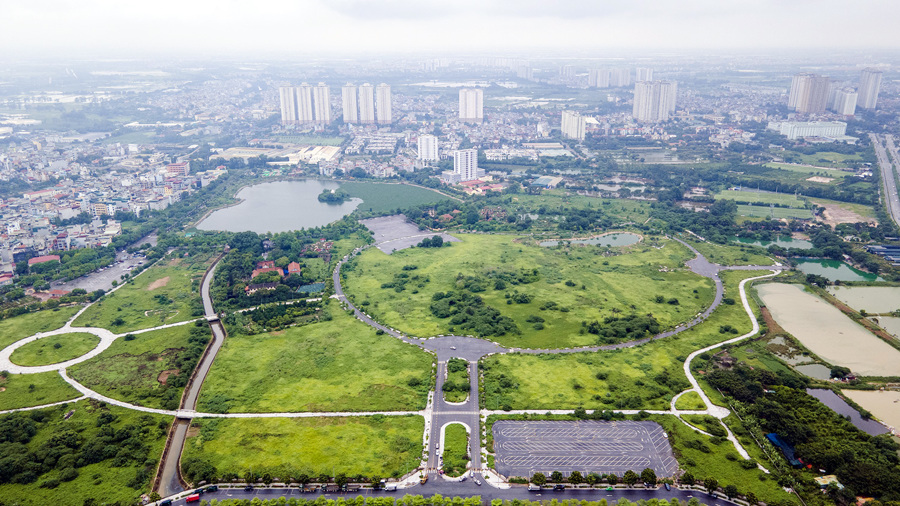
Thanh Tri is located in the expanding urban area and plays an important role in the downtown, creating a green space interspersed with the inner city to balance ecology and protect natural landscapes.
Arial view of the Chu Van An Cultural Park project in Thanh Tri District, which is expected to become a "green lung" for residents in the southwest region of Hanoi. Photo: Minh Quang |
Tran Viet Trung, Director of the District Construction Investment Project Management Board, said the model is in line with Hanoi's Master Plan to 2030 and Vision for 2050.
"This is an important project to ensure the nature and function of the green belt according to the Master Plan for Hanoi to 2030 with a vision to 2050 approved by the Prime Minister," Trung said.
According to him, green buildings need to be designed with environmentally friendly materials to maximize natural resources and energy use. "In addition, green spaces in buildings are crucial for enhancing the well-being of users, creating a healthy living environment, and improving the microclimate."
Nguyen Xuan Phong, Chairman of the District People's Committee, said that in recent years, Thanh Tri has made many efforts and proactively implemented solutions to create a transitional ecological green zone.
Specifically, the district has added 34 new public green spaces, an increase of approximately 27.4 hectares, or one square meter per person.
"Thanh Tri has reviewed public land suitable for planning to establish investment projects to build public green areas in residential areas. In addition, we have also focused on investing in the construction of public green infrastructure projects, embankments for ponds and lakes in the area, and the implementation of the Chu Van An Cultural Park project with an area of about 94 hectares," Phong added.
At present, the town continues to invest in the completion of monuments, memorial houses, guest houses, miniatures, reliefs, and other architectural works.
"The district prioritizes the development of cultural, entertainment, and large-scale projects to create a majestic space for the entire urban area," Phong said.
He emphasized that the district has recently focused on strong leadership to specify the contents, tasks, and planning solutions related to urban infrastructure development in the direction of creating highlights for the Green Zone.
Phong also emphasized that the global trend of green transition aims to reduce ecosystem degradation and negative environmental impacts.
Green buildings improve energy efficiency, reduce carbon emissions, promote sustainable use of natural resources, minimize environmental pollution, and encourage social participation.







